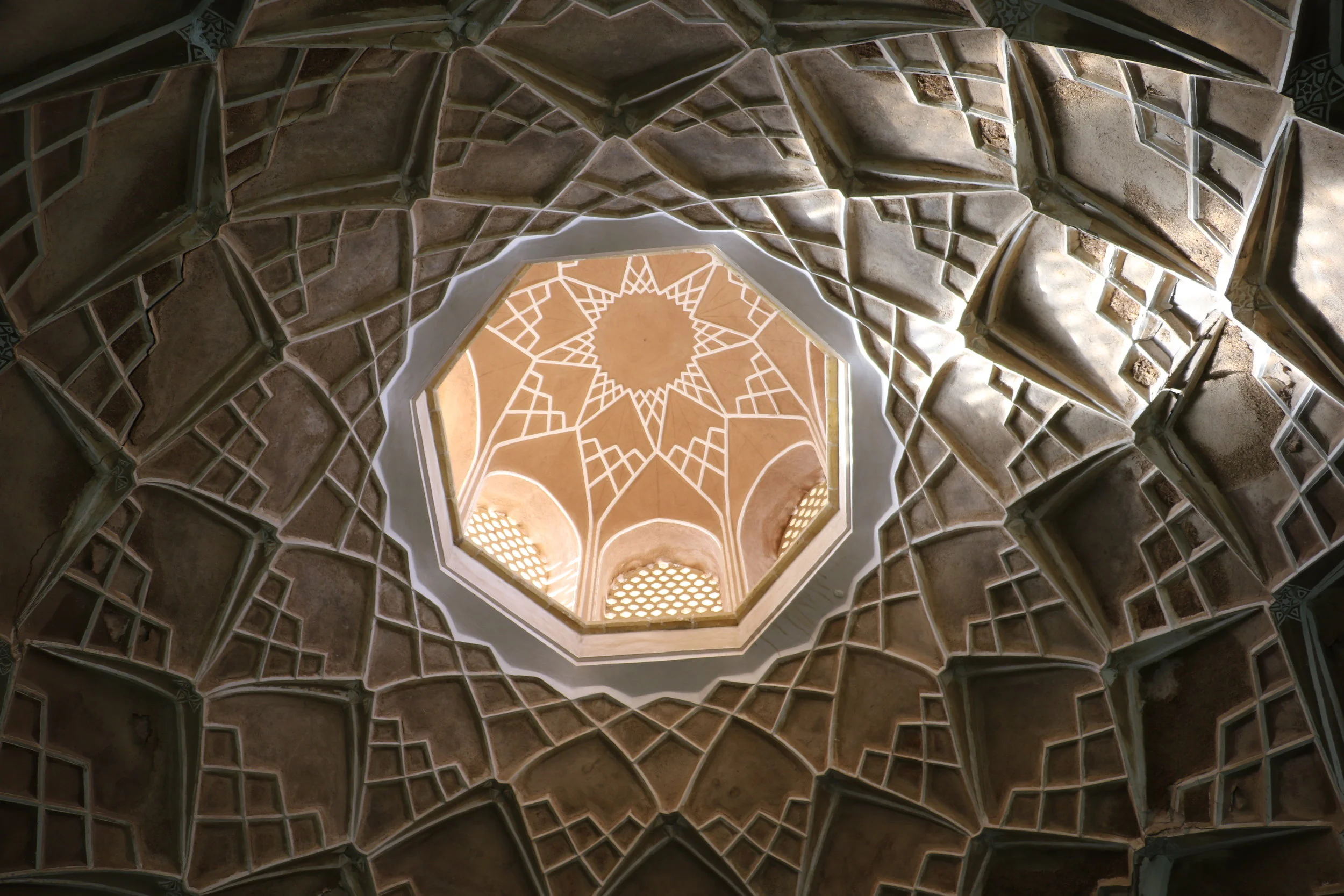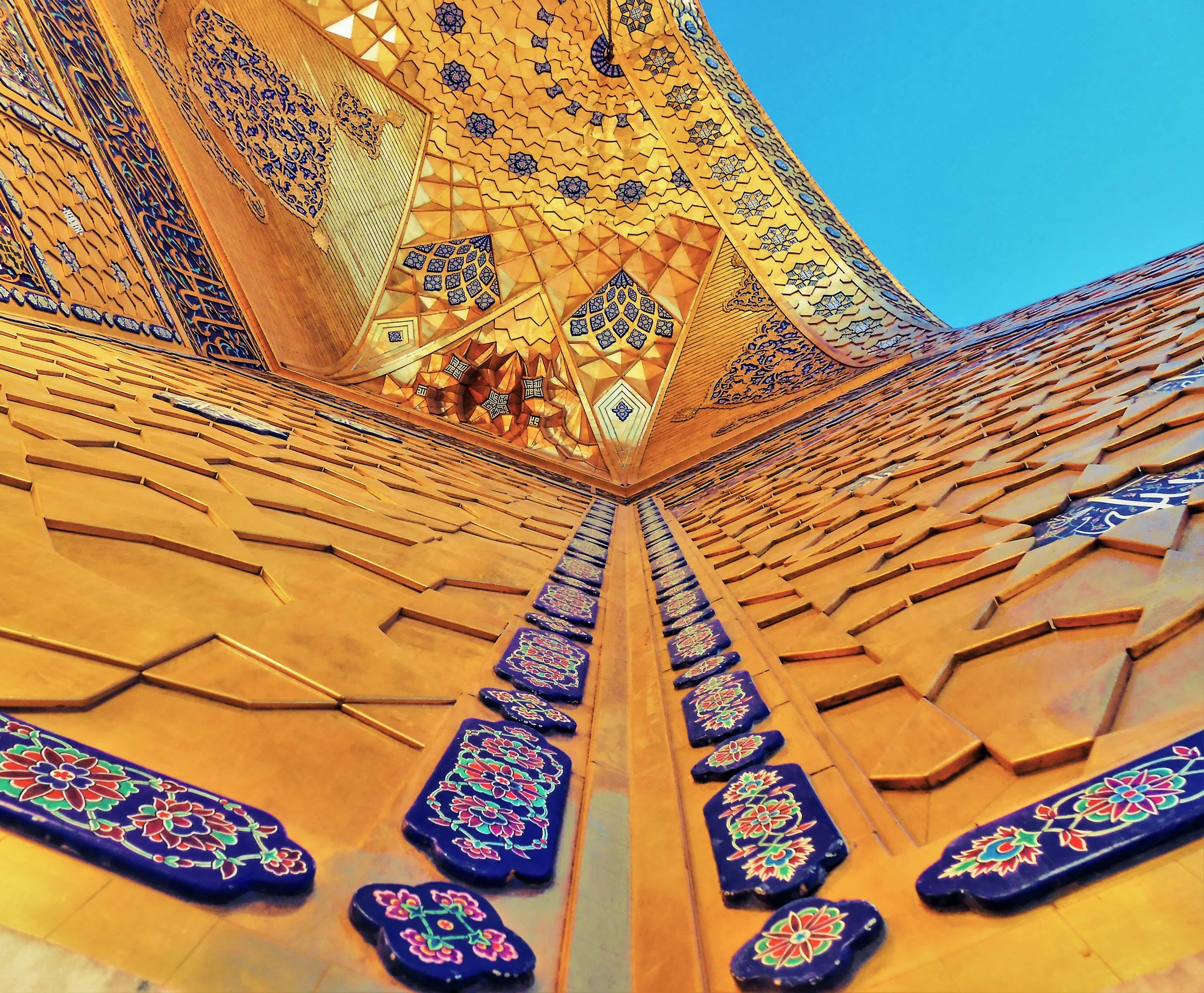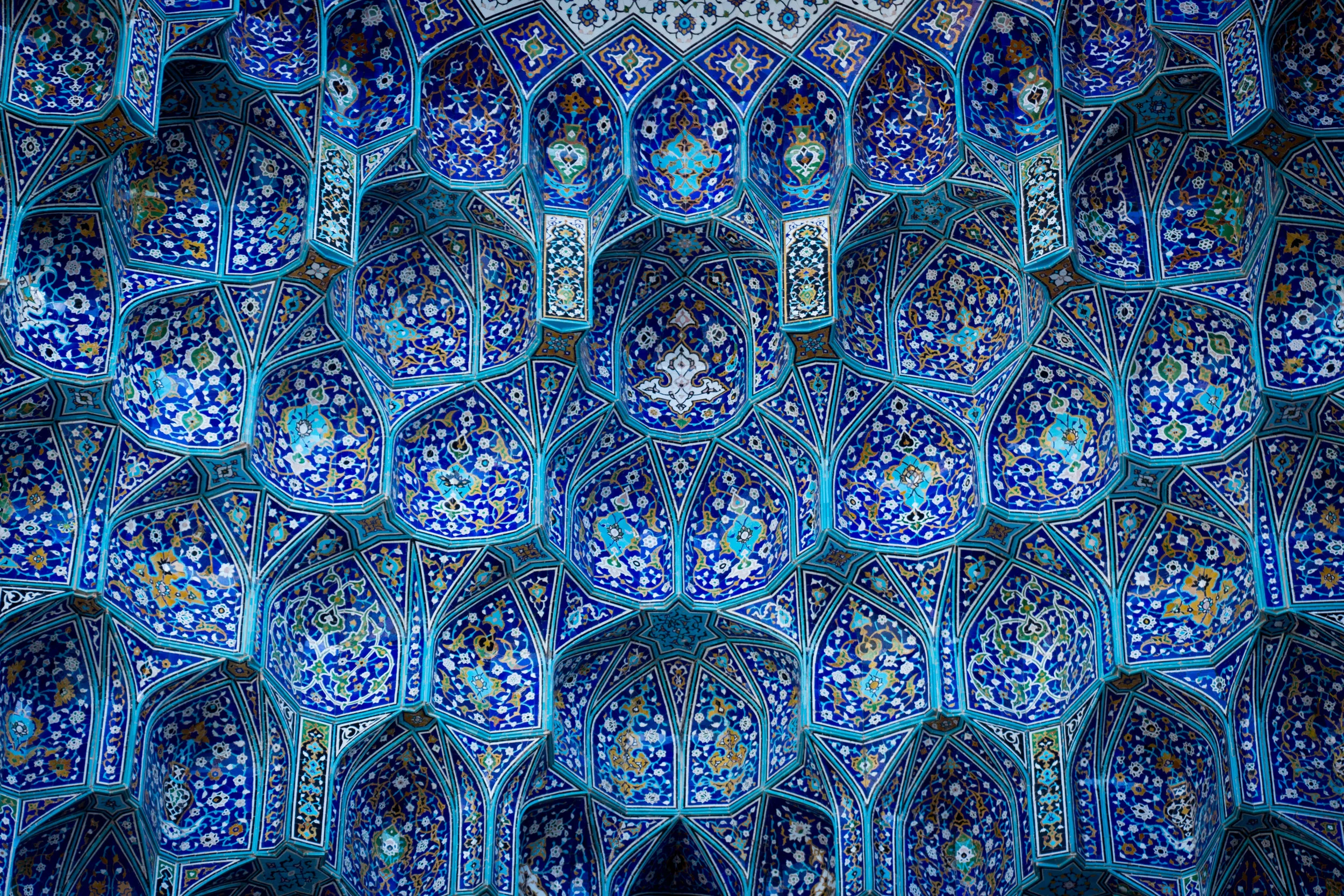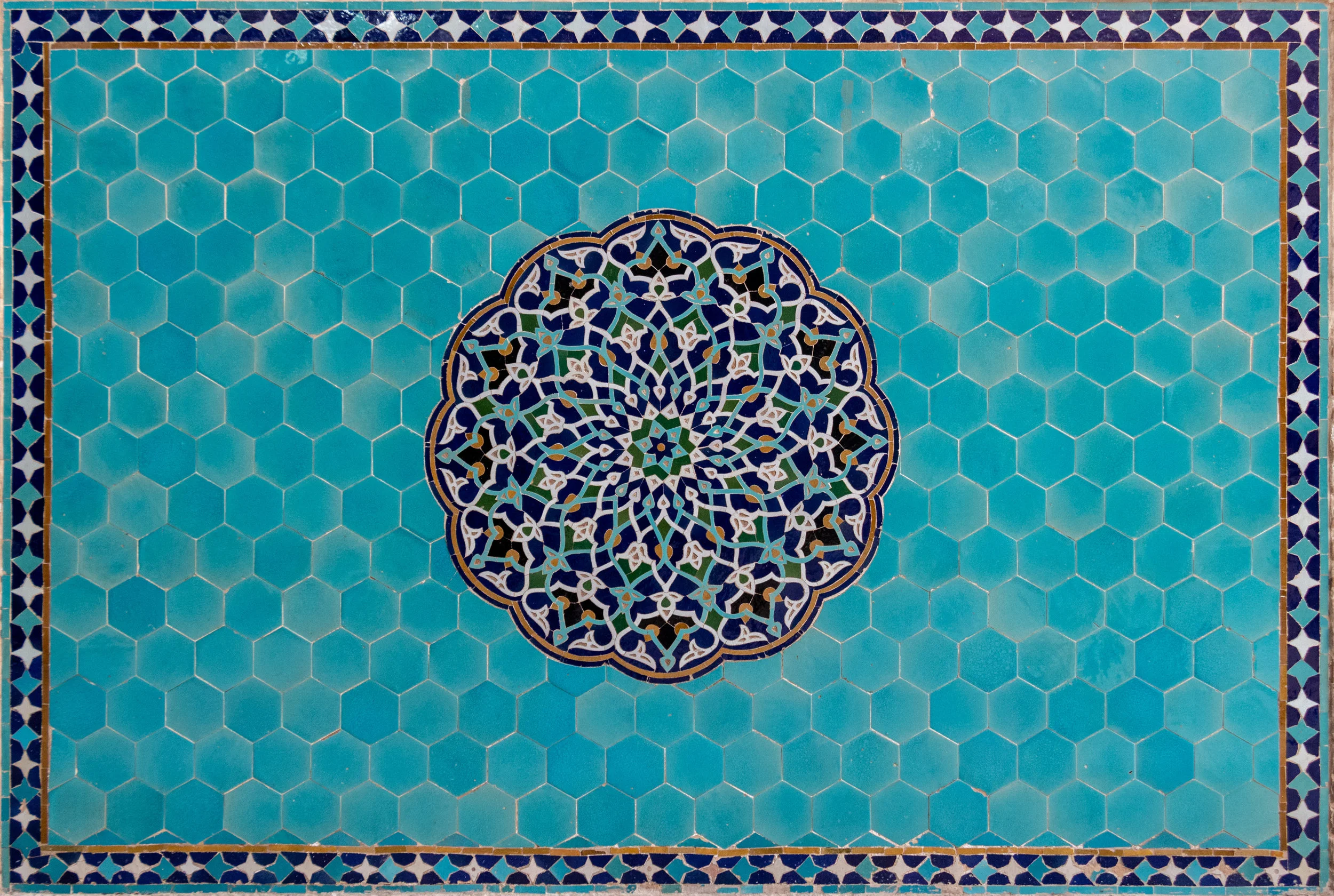How to learn Islamic patterns?
I started with Islamic patterns five years ago and it has been a great journey where I studied this type of art in London, travelled the world to see the patterns and have been teaching it in Saudi and the UK!
One of the most popular messages I receive on my Islamic illumination instagram is along the lines of this:
“I really like Islamic art and patterns how can I do it and what do you recommend?”
The answer is never short and sometimes I just send people to my blog to figure it out for themselves. The question itself is very generic and too broad for me to answer in a message.
Even more specific questions like what is islamic illumination? And what Illumination books should I get? need a longer chat and so on. I noticed that even with the informative blog posts that I have, there might still be questions lingering and unanswered about how to start learning more about Islamic art and especially patterns, so I am writing this guide to help you get started with Islamic art and patterns.
What is Islamic Art?
Before we get into the Islamic patterns let me tell you about where patterns appear. They appear in the Islamic world over various buildings, crafts and arts. All of that is usually known as Islamic art.
I have been researching Islamic art as part of my PhD for the past three years and let me summarise the definition for you. The phrase Islamic art is a huge umbrella phrase that was given to the field by European researchers in the late 1800s and early 1900s.
It’s interesting to note that Islamic arts are not only religious art for religious sacred spaces, but they also appear on secular books, buildings and objects . The term usually means all the arts, where Islam was the majority religion . However, it is a problematic and inaccurate term because Islam is spread over 55 countries and each region has a very distinctive style.
Since the term Islamic art is so big and it actually encompasses everything, you will have to know what type of art or craft that you want learn about since this area of art includes ceramics, metalwork, textiles, illumination, calligraphy and so on.
A lot of these practical crafts are covered with a visual skin that is geometric and/or biomorphic patterns and this post I am mainly going to tell you how to get started with those types of patterns!
Read: the timeline of Islamic art development can be found in Archnet.org
If you are interested in reading on the general subject of Islamic art then read: The Formation of Islamic Art by Oleg Grabar, Islamic Art by Barbara Brend, Art of Islam, Language and Meaning by Titus Burckhardt. As you might have noticed all the writers of the major publication on Islamic arts are all white and Western. It is sad to see the lack of diversity, but these three books are logical and have a wealth of good information.
Islamic patterns
Think of any mosque that you have been to and the patterns of that mosque would start jumping at you! Islamic patterns cover the surfaces of most things in the Islamic worlds (and outside of it actually). Mosques, Qurans, palaces and other objects all have patterns.
They are usually referred to as Islamic because they were found in the Islamic worlds and that all begs an interesting discussion on the makers and thinkers of these patterns and their ways of thinking.
Islamic patterns are divided into two main types: geometric and biomorphic. However, some writers spoke about Islamic patterns consists of four units: geometric, vegetal, animal based and calligraphy based. The geometric type is the most obvious one and that is the most noticeable and studied. This is what usually draws people into islamic patterns.
Islamic geometric patterns are very logical, mathematical and fit in perfectly on a plane. They always start from a circle and are traditionally made with a compass and straight edge. The central star or the rosette can be counted and that is usually how patterns are named.
For examples, we see five pointed, six pointed, eight pointed, 10 pointed, 12 pointed stars and so in the Islamic world. Sometimes various star patterns are used together or separately to create a more complex designs. A lot of the geometry experts had to work in reverse from seeing the finished product that is why there are a lot of various methods to constructing those patterns.
Islamic biomorphic patterns are the vegetal patterns that are either used as a filler for the geometric patterns or used on their own as the main focus. They are inspired from nature, but they are not a direct representation rather they are stylised and manipulated to create a more abstract feel to transport the viewer to another world.
Biomorphic patterns have a number of names that are more common like Arabesque, nbati, islimi, rumi and khatei. Each name comes from a different culture and languages. There is no right or wrong name, but biomorphic is the safest name.
Learning Islamic Geometric Patterns
As this is your first guide into getting started with islamic patterns, I want to tell you all the ways to learn about patterns. The first teachers I had who taught me Islamic geometry were Richard Henry and Adam Williamson from the Art of Islamic patterns, so they are great if you happen to be in London or if you manage to get on one of their trips abroad to learn Islamic geometry in one of the locations: Fez, Istanbul, Granada and few other locations.
They have various offers from weekly courses to intensive weeks. The patterns they choose are not the easiest and they take a while to build up, but they are both great teachers and you will always meet nice people on their classes.
Another amazing teacher who is an expert in Islamic geometry is Samira Mian. She has two online course and has a set of one day workshops in London and Manchester. She also has so many free YouTube tutorials. If you are serious you would start learning about this right away. I would highly recommend her in person workshops. They are so much fun and she has lots of patterns to choose from.
A third option is Sandy Kurt and her online tutorials. Her patterns are complex, but beautiful. She also sends a lot of freebies on her monthly newsletter.
If books are more your speed then there is Islamic Designs by Daud Sutton, Islamic Patterns by Keith Critchlow, Geometric Concepts in Islamic Art by Issam El-Said & A. Parman and Arts and Crafts of the Islamic Lands. If they are two expensive to buy, you might be able to find them in a close by public library. These books are the best in teaching you Islamic geometric art, but they aren’t the easiest to decode if you are a complete beginner, so I would advice you to start with a little workshop or a YouTube video.
The great thing about islamic geometric patterns is they are constructed with only a compass and a straight edge with lots of sharpened pencils and a lot of things can be created by those simple tools.
Learning Islamic biomorphic Patterns
Sometimes the teachers who teach Islamic geometric patterns get into the biomorphic ones too and add them to the mix of things they teach, but it is not easy finding a class that purely teaches the organic forms. My islamic illumination workshops are from the few that mainly focus on drawing and painting biomorphic patterns, which are also based on geometric rules, but have more free hand work involved to create the flowing patterns that are usually found on Islamic tiles and in manuscripts.
I specialise in a specific area called Islamic illumination as well, which means painting patterns with gold. There are a fair amount of teachers that teach the painting technique. The teacher you need, will depend on what you want to learn and your location in the world.
If you are interested in learning the traditional style of illumination painting, you can join my online course, which focuses on one pattern in details and tell you the A to Z of painting it according to the traditional method. There are also other Islamic pattern live workshops online and three other recorded courses. So, lots to choose from.
In terms of books that will teach you Islamic illumination, I find the ones written in Turkish and Farsi to be the most helpful. These books can be found online and I have a list of the Persian illumination books that I really like and they are more focused on the drawing part and the motifs rather than building a design or meaning of things. These books have ready templates if you are more interested in the painting part.
English resources are not as strong as ones found in Turkish or Farsi, but there are a few nice ones: Islamic Art of Illumination by Sama Onat, which is a nice starting book with very lovely photos. It is not a complete guide, but it is good for information and some motifs.
I also love Curves by Lisa De Long and that helped to start thinking of pattern design. It’s a small book that can be read in a day, but it has some nice ideas. The book I mentioned in the islamic art section: Arts and Crafts of the Islamic Lands has a chapter on the subject, but I found it too brief and not enough for someone to really know more about this art form.
If your interest in biomorphic patterns is about the ones found in Qurans and manuscripts then you will appreciate: Splendours of Qur'an Calligraphy & Illumination by Martin Lings and The Art of the Qur'an by Massumeh Farhad. Both have some good background information and gorgeous examples, but they don’t tell you about the practical side.
Islamic biomorphic patterns are not only done on papers, but you see them on tiles, metal, wood and other media. It’s actually fascinating learning the other application methods because you will be learning a complete set of skills for each one. With my previous experience painting on paper, I attended two courses on traditional Islamic tiles and Lustre Persian Tiles and it was still challenging because the painting techniques were applied differently on paper vs ceramics. I really enjoyed it though!
The meaning of Islamic patterns
The meaning of islamic patterns is a very big subject and it’s very appealing to a lot of people because all that beauty must have a reason.
It has been thought by researchers like Sayed Hossain Nasser and Keith Critchlow that patterns came from a very spiritual place reflecting the unity and multiplicity of the universe; reflecting God and the devotion to him. The whole act of designing and painting tiles is a reflection of the continuous remembrance of God.
There are very different views on patterns and their meanings and if you are interested in this type of spiritual thinking you can read S H Nasser’s book, Islamic art and spirituality. A lot of books related to the Sufi order explains and encourages this type of thinking such as Sufi: Expression of the Mystic Quest by Laleh Bakhtiar.
The art of pattern is a wonderful subject to research and I wish you luck in learning all about it!
If you need to use the information of this post, please reference it correctly. Here is the reference in Harvard style:
Alhamal, E. (2019). How to get started with Islamic patterns?. [Blog] Islamic Illumination. Available at: http://www.islamicillumination.com/blog/how-to-get-started-with-islamic-art-and-islamic-patterns [Accessed -date-].
Please note, most of the links in this post are affiliate links, which means I get a small commission from your purchases if you use my links. This helps me bring you all of this useful free content. For more information on that please read the disclaimers.










![[Pigments & Handmade Watercolour]
The first time I was told about making my own watercolours from pigments, I was confused and thought why would I ever need to do that with such an abundance of choices out there in the shops, but something clicke](https://images.squarespace-cdn.com/content/v1/5723e7f53c44d8676af44a5a/1593364075353-5E6JVA2WRDFXW55RLU86/image-asset.jpeg)





![[Copyrights & watermarks] ⤵️
.
.
22ct gold added✨ & this lovely brush stand is made from the garden rosewood by @fidget_one 💛🙏🏻
.
.
“You should put a watermark” someone told me, but it’s not the first time I get told &ldq](https://images.squarespace-cdn.com/content/v1/5723e7f53c44d8676af44a5a/1591790274366-15MOG8GA6UAJXTH7SWW9/image-asset.jpeg)



